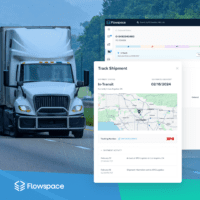
The refrain in Kenny Rogers’ The Gambler, “You’ve got to know when to hold ’em, know when to fold ’em,” has suddenly taken on a new meaning for retailers and brand operators.
The “hold or fold” in this case is the glut of inventory major retailers are stuck with as pandemic-driven changes in shopping patterns, inflation, and ongoing supply chain challenges make forecasting demand more difficult than ever before.
It’s a hand industry analysts have expected retailers to be dealt. After record-breaking total retail sales growth of 14% in 2021, the growth spike is evening out as consumers return to pre-pandemic spending on travel, dining, and experiences and more carefully watch other spending due to inflation.
As explained in a recent Insider article, the “bullwhip effect” of how long it takes demand changes to travel up the supply chain—especially given its recent clogs—is how many companies got caught, quite literally, holding the bag(s) of excess inventory. If retailers don’t make the next right move with their excess inventory, it could negatively affect their results for months to come.
There are really two options—sharply cut prices, as Target and others are doing, or “pack and hold,” which means storing away inventory until demand increases. Because retailers and ecommerce brands often see profit margins negatively affected by a strategy aimed at cutting prices, a pack and hold approach is the more appealing option in the current climate.
To achieve the latter, brands must have ready access to storage capacity, as well as a holistic view of existing inventory and the predictive insights and data needed to help forecast future demand.
Up the Ante with Storage and Software
Flowspace offers one of the top 10 largest warehouse networks nationwide, with more than 130 locations encompassing 33 million square feet of space. The flexible network enables brands to add, remove, or reconfigure storage and fulfillment nodes as needed.
Flowspace’s Inventory Flow software helps brands determine inventory needs with confidence. The platform offers real-time visibility across order sources, along with current and historic customer insights that help inform demand forecasting recommendations. Robust inventory forecasting and purchasing capabilities support smarter inventory management and allocation decisions.
To find out how Flowspace can help your brand manage and forecast inventory amidst fluctuating consumer demand, get in touch.

Author Bio:
Frank Garcia is head of operations at Flowspace, leading teams focused on scaling, empowering, and managing the company’s distributed network of fulfillment centers and those supporting customer success within them. Prior to joining Flowspace, Frank led fulfillment services and client success & solutions for tech-forward 3PL OceanX. He also served as director of supply chain & operations at Lakeshore Learning Materials, and held several roles at McMaster Carr, a leading industrial supply distributor specializing in same-day delivery.





